1.
Introduction
Frames have appeared implicitly in the mathematical literature before they were introduced officially by Duffin and Schaeffer in the context of the non-harmonic Fourier series [1]. Since the celebrated work by Daubechies et al. [2], frame theory has recently become an important tool in many fields such as sampling theory, signal processing and data compression. In recent years, various generalizations of frames have been proposed for different purposes such as frames of subspaces (fusion frames), oblique frames, pseudo-frames, outer frames and g-frames [3,4,5,6,7]. Indeed, all of these generalizations can be regarded as special cases of g-frames [7]. Today, g-frames, with their applications, have been investigated by many researchers [8,9,10,11,12]. As is well known, frames with a special structure, such as Gabor frames and wavelet frames, not only have great variety for use in applications, but also they have undergone extensive theoretical analysis [13,14,15]. Moreover, the dilation property is very important in frame theory and has attracted much attention from scholars from different related fields. The classical dilation theorem for frames shows that every frame for a Hilbert space can be dilated to be a Riesz basis for a larger space [15]. Motivated by these aspects of frames, in this work, we are interested in the dilations of the more general g-frames that are generated by a unitary group, or by a projective unitary representation. In addition, we would like to work more with dual g-frame generators for projective unitary representations.
Throughout this paper, H and K are two Hilbert spaces over the field of complex numbers and I is the identity operator on H. The notation B(H,K) refers to the space of all bounded linear operators from H into K, and we write B(H)=B(H,H) as the shorthand. Denote by {Hi:i∈J} a sequence of subspaces of K and by B(H,Hi) the collection of all bounded linear operators from H into Hi for every i∈J, where J is a countable index set. Let {Λi∈B(H,Hi)}i∈J be a family of operators. If there exist two constants A and B with 0<A≤B<∞ such that
we call {Λi∈B(H,Hi)}i∈J a g-frame for H with respect to {Hi}i∈J, where A and B are called the lower and upper frame bounds, respectively. For simplification, if the spaces are clear, we will just say that {Λi}i∈J is a g-frame for H in the sequel. If we only have the upper bound, then {Λi}i∈J is said to be a g-Bessel sequence for H. {Λi}i∈J is called a tight g-frame for H if A=B, and a Parseval g-frame for H provided that A=B=1 [7].
If {Λi}i∈J is a g-frame for H, then we can define the operator S:H→H by
where Λ∗i is the adjoint operator of Λi. Obviously, S is a well-defined, bounded, positive, invertible operator on H. Noted that S is a g-frame operator that is associated with {Λi}i∈J. Another fact is that {ΛiS−1}i∈J is also a g-frame for H and {ΛiS−12}i∈J is a Parseval g-frame for H (see [7]).
{Λi∈B(H,Hi)}i∈J is called a g-orthonormal basis for H if it satisfies the following:
where δi1,i2 is the Kronecker delta. Actually, by [16, Corollary 2.13], {Λi}i∈J is a g-orthonormal basis if and only if {Λi}i∈J is a g-frame and the first equation holds.
The organization of this article is as follows. In Section 2, the dilation results for g-frame generator sets for unitary group will be given. In Section 3, we focus on the g-frame generator sets for projective unitary representation of countable groups and consider the corresponding dilation property. In Section 4, we give some characterizations of g-frame generators for projective unitary representation in terms of complete wandering operators. Moreover, we study some properties of g-frame generators. In Section 5, we introduce the notion of dual g-frame generators and explore some equivalent characterizations of g-frame generator dual pairs.
2.
g-frame generator sets for unitary groups
In this section, we mainly focus on the dilation problem for g-frame generator sets for a countable unitary group, as well as present some existing dilation results.
Recall that a unitary system is a subset of unitary operators acting on H which contains the identity operator I in B(H) [17]. Evidently, a unitary group is a special case of unitary system. Two unitary systems U1 and U2 acting on Hilbert spaces H1 and H2, respectively, are said to be unitarily equivalent if there is a unitary operator T:H1→H2 such that TU1T∗=U2.
According to [18], if H1,H2 are Hilbert spaces, let H1⊙H2 be the algebraic tensor product over C. Denote an inner product on H1⊙H2 by
extended by linearity, where ⟨⋅,⋅⟩i is the inner product of Hi. Then the Hilbert space tensor product H1⊗H2 is the completion of H1⊙H2. Generally, if S1,T1∈B(H1) and S2,T2∈B(H2), we can define S1⊗S2∈B(H1⊗H2) by
Then (S1⊗S2)(T1⊗T2)=S1T1⊗S2T2,S1⊗(S2+T2)=(S1⊗S2+S1⊗T2) and (S1⊗S2)∗=S∗1⊗S∗2.
In what follows, we use J to denote a countable index set and I⊆J to denote a finite set.
Definition 2.1. ([19, Definition 2.1]) Let U be a countable unitary system on H and {Λi∈B(H,K)}i∈J. We say that {Λi}i∈J is a g-Bessel sequence (g-frame, Parseval g-frame, or tight g-frame) generator set for U if {ΛiU∗}i∈J,U∈U is a g-Bessel sequence (g-frame, Parseval g-frame, or tight g-frame) for H.
In particular, for Λ∈B(H,K), we say that Λ is a g-Bessel sequence (g-frame, Parseval g-frame, or tight g-frame) generator for U if {ΛU∗}U∈U is a g-Bessel sequence (g-frame, Parseval g-frame, or tight g-frame) for H.
Inspired by the above definition, we introduce the following notion.
Definition 2.2. Let U be a countable unitary system on H and {ΛiV∈B(H,K)}i∈J,V∈U. {ΛiV}i∈J,V∈U is called a diagonal (Parseval or tight) g-frame generator set for U if {δVUΛiVU∗}i∈J,V,U∈U is a (Parseval or tight) g-frame for H, where δVU is the Kronecker delta.
Remark 2.3. Let I⊆J be a finite set and U be a countable unitary system. For a Hilbert space K, define an operator
where {eiU:i∈I,U∈U} is the standard basis of ℓ2(I×U) and ⊗ denotes a tensor product. It is easy to check that, for each a∈ℓ2(I×U) and k∈K,
We see from Lemma 2.9 in [19] that, for a g-frame generator set {Λi∈B(H,K)}i∈I for U, the analysis operator of {ΛiU∗}i∈I,U∈U is defined by
The operator S:H→H given by
is called the g-frame operator of {ΛiU∗}i∈I,U∈U. Particularly, if Λ is a g-frame generator for U, the analysis operator of {ΛU∗}U∈U can be defined by
where {eU}U∈U is the standard basis for ℓ2(U).
Let U be a unitary group and {eiU:i∈I,U∈U} be the standard basis of ℓ2(I×U). For each U∈U, we define the unitary operator on ℓ2(I×U) by λUeiV=ei(UV), where i∈I,V∈U.
The following result shows that a g-frame generator set for a unitary group is an image of an orthonormal basis under a positive operator with a suitable spectrum.
Theorem 2.4. Let U be a unitary group on H and {Λi∈B(H,K)}i∈I be a g-frame generator set for U with the frame bounds A and B. Then,
(1) there exists an isometry Φ:H→ℓ2(I×U)⊗K such that Φ∗(λU⊗IK)Φ=U for all U∈U, where IK is the identity operator on K;
(2) there exists a positive operator Ξ:ℓ2(I×U)⊗K→Φ(H) such that {A12,B12}⊆σ(Ξ|Φ(H))⊆[A12,B12] and, for any U∈U and g∈K,
where σ(Ξ|Φ(H)) denotes the spectrum of the operator Ξ|Φ(H);
(3) Ξ2 is unitarily equivalent to S⊕00, where S is the g-frame operator of {ΛiU∗}i∈I,U∈U and 00 is the zero operator on Φ(H)⊥.
Proof. Assume that S is the g-frame operator for {ΛiU∗}i∈I,U∈U; then,
First, we want to prove that SU=US for each U∈U. In fact, for f∈H,
Since S is an invertible positive operator, we have that S−12U=US−12 for each U∈U. Note that {Λi∈B(H,K)}i∈I is a g-frame generator set for U; we know that {ΛiU∗S−12}i∈I,U∈U is a Parseval g-frame (see [7], Remark1). Then, {ΛiS−12U∗}i∈I,U∈U is also a Parseval g-frame, that is, {ΛiS−12}i∈I is a Parseval g-frame generator set for U. Let Φ be the analysis operator of the Parseval g-frame {ΛiS−12U∗}i∈I,U∈U. Then,
Thus, for each f∈H and U∈U, we have
Since {ΛiS−12U∗}i∈I,U∈U is a Parseval g-frame, it implies that Φ∗Φ is the identity on H. This leads to
that is, (1) holds.
Let Φ∗ be the synthesis operator of {ΛiS−12U∗}i∈I,U∈U defined by
Set Ξ=ΦS12Φ∗. Then for all U∈U and g∈K, one has
Since any element in Φ(H) can be expressed as ∑i∈I,U∈U(eiU⊗ΛiS−12U∗f) for f∈H, we have
This implies that
Since, for any f∈H, Φf=∑i∈I,U∈U(eiU⊗ΛiS−12U∗f) and Φ is an isometric operator, it follows that
Let g′=∑i∈I,U∈U(eiU⊗ΛiS−12U∗f). It turns out that
which proves (2).
Finally, to verify (3), we define U0:H⊕Φ(H)⊥→ℓ2(I×U)⊗K by
Obviously, U0 is unitary because Φ is an isometric operator. Since Φ∗Φ is the identity on H and Ξ=ΦS12Φ∗, we get that
Then,
Thus, Ξ2=U0(S⊕00)U∗0. The proof is complete. □
Corollary 2.5. Suppose that U is a unitary group on Hilbert space H and {Λi∈B(H,K)}i∈I is a g-frame generator set for U with the frame bounds A and B. Then,
(1) there exists a Hilbert space N⊇H and a unitary group V on N such that the restriction map V∋V→V|H is a group isomorphism of V onto U;
(2) there exists a positive operator Ξ:N→H such that
Proof. Let N=ℓ2(I×U)⊗K. By Theorem 2.4(1), we know that Φ(H) is an invariant subspace of λU⊗IK and Φ is an isometric operator, where Φ is defined as in Theorem 2.4. So, we can embed H into N by identifying H with Φ(H). Denote V={λU⊗IK}U∈U. Then, clearly, V is a unitary group on N. Hence, the restriction map V∋V→V|H is a group isomorphism of V onto U. By Theorem 2.4(2), it is easily seen that (2) holds. □
3.
g-frame generator sets for projective unitary representations
In this section, we survey the dilation property of g-frames in the context of projective unitary representations. For this purpose, we need to recall a few concepts and notations, which can be found in [20].
A projective unitary representation π for a countable group G is a mapping g→π(g) from G into the group U(H) of all unitary operators on a separable Hilbert space H such that
where μ(g,h) is a scalar-valued function on G×G taking values in the circle group T. The function μ(g,h) is then called a multiplier of π. We also say that π is a μ-projective unitary representation. It is clear from the definition that
Any function μ:G×G→(T) satisfying (3.1) and (3.2) above will be called a multiplier for G.
Similar to the group unitary representation case, the left regular projective representation with a multiplier μ for G plays a crucial role here. Let μ be a multiplier for G. For each g∈G, we define λg:ℓ2(I×G)→ℓ2(I×G) by
where I is a finite set and {eih}i∈I,h∈G is the standard orthonormal basis for ℓ2(I×G). Clearly, λg is a unitary operator on ℓ2(I×G).
Theorem 3.1. Let G be a countable group and π be a projective unitary representation of G on H with a multiplier μ. Assume that {Λi∈B(H,K)}i∈I is a g-frame generator set for {π(g)}g∈G. Then,
(1) there exists a family of operators {Ci∈B(H,K)}i∈I such that {Ci}i∈I is a Parseval g-frame generator set for {π(g)}g∈G;
(2) there exists an isometry Φ:H→ℓ2(I×G)⊗K such that Φ∗(λg⊗IK)Φ=π(g) for all g∈G;
(3) there exists a projective unitary representation Δ(g) of G on ℓ2(I×G)⊗K and a family of operators {Λ′i}i∈I such that {Λ′iΔ(g)∗}i∈I,g∈G is a g-orthonormal basis for ℓ2(I×G)⊗K;
(4) there exist μ-projective unitary representations π1 and π2 of G on a Hilbert space Φ(H)⊥ and Φ(H), respectively, and diagonal Parseval g-frame generator sets {Mih}i∈I,h∈G and {Nih}i∈I,h∈G for π1(g) and π2(g), respectively, such that {δgh[Mihπ1(g)∗⊕Nihπ2(g)∗]}i∈I,g,h∈G is a g-orthonormal basis for Φ(H)⊥⊕Φ(H).
Proof. (1) First, we need to check that π(g)S=Sπ(g) holds for all g∈G, where S is the g-frame operator for {Λiπ(g)∗}i∈I,g∈G. Indeed, for g∈G and x∈H, we have
Thus, π(g)S=Sπ(g), as claimed. Since S is an invertible positive operator, we know that S−12π(g)=π(g)S−12 for each g∈G. Since {Λi∈B(H,K)}i∈I is a g-frame generator set for {π(g)}g∈G, it follows that {ΛiS−12π(g)∗}i∈I,g∈G is a Parseval g-frame for H. Let Ci=ΛiS−12. Then, it can be verified that Ci satisfies the requirements.
(2) Let Φ:H→ℓ2(I×G) be the analysis operator of the Parseval g-frame {Ciπ(g)∗}i∈I,g∈G. Then, for each x∈H,
where {eig}i∈I,g∈G is the standard orthogonal basis of ℓ2(I×G). Obviously, Φ is an isometric operator. Let λg be a unitary operator as defined in (3.3). Since π(g)∗=¯μ(g,g−1)π(g−1) and
for each k∈K, it follows that
for each x∈H. In the penultimate step we used (3.1) and (3.2) to eliminate three multiplier terms. Hence,
Thus, (2) is proved.
(3) Define Δ(g)=λg⊗π(g). For all h,g∈G, we have
Denote ν(g,h)=[μ(g,h)]2. Then, for any g1,g2,g3∈G,
and, consequently, Δ is a ν-projective unitary representation of G.
Let N=ℓ2(I×G)⊗K and Λ′i=(λe⊗ΛiS−12). Then, for all g,h∈G, i,j∈I and k,ki,kj∈K, we have
and
Therefore, {Λ′iΔ(g)∗}i∈I,g∈G is a g-orthonormal basis.
(4) Let P be the orthogonal projection onto Φ(H). Then for all x∈H, k∈K, g∈G and j∈I,
Hence, {P(ejg⊗k)−Φπ(g)C∗jk}⊥Φ(H). Since {P(ejg⊗k)−Φπ(g)C∗jk}∈Φ(H), it implies that
Using (3.4) and (3.5), for j∈I, h∈G and k∈K, we deduce that
Thus, we get the commutation relation
Let Mig=λe⊗ΛiS−12π(g)∗(I−P) and π1(h)=(I−P)(λh⊗IK), where e is the unit of G, i∈I and g,h∈G. Then,
Since (I−P) is an orthogonal projection, we know that {δghMigπ1(h)∗}i∈I,g,h∈G is a Parseval g-frame for Φ(H)⊥. For g,h∈G, we have
By restricting the domain of π1(g) to Φ(H)⊥, we can get that π1 is a μ-projective unitary representation of G on Φ(H)⊥. For each i′∈I and g′,h′∈G, let Ni′g′=λe⊗ΛiS−12π(g′)∗ and π2(h′)=Φπ(h′)Φ∗. Obviously, π2 is a μ-projective unitary representation of G on Φ(H). Moreover, we have
Hence, {δg′h′Ni′g′π2(h′)∗}i∈I,g,h∈G is a Parseval g-frame for Φ(H). Thus,
By (3), it is easy to see that {δgh[Mihπ1(g)∗⊕Nihπ2(g)∗]}i∈I,g,h∈G is a g-orthonormal basis. This completes the proof. □
4.
g-frame generators for projective unitary representations
This section is devoted to investigating the g-frame with the structure of projective unitary representations. We will see that the g-frame generators for a projective unitary representation can be characterized from the perspective of complete wandering operators and operators in the commutant of {π(g)}g∈G.
Definition 4.1. ([21]) Let U be a unitary system. A complete wandering operator for U is a co-isometry A∈B(H,K) such that AU∗={AU∗:U∈U} is a g-orthonormal basis for H.
Let Q⊆B(H) be a set. The notation Q′ will denote the usual commutant of Q, that is,
It is well known that, if T∈B(H) has closed range, then there exists an operator T†∈B(H) such that
where R(T) and N(T) denote the range and null space, respectively. This operator is uniquely determined by these properties, and we call it the pseudo-inverse of T. Clearly, if T is invertible, then T−1=T†.
Theorem 4.2. Suppose that G is a countable group, π is a projective unitary representation of G on H with a multiplier μ, and T∈B(H,K) is a complete wandering operator for {π(g)}g∈G. Then,
(1) an operator A∈B(H,K) is a g-frame generator for {π(g)}g∈G if and only if there exist an isometric operator Θ∈{π(g)}′g∈G and an invertible positive operator E∈{π(g)}′g∈G such that A=TΘE. In particular, an operator A is a Parseval g-frame generator for {π(g)}g∈G if and only if there exists an isometric operator Θ∈{π(g)}′g∈G such that A=TΘ;
(2) if A is a g-frame generator for {π(g)}g∈G, then there exists a Hilbert space M and an invertible positive operator E∈{π(g)}′g∈G such that {AE−1π(g)∗}g∈G is a g-orthonormal basis for M;
(3) an operator A is a complete wandering operator for {π(g)}g∈G if and only if there exists a unitary operator U such that U∈{π(g)}′g∈G and A=TU.
Proof. (1) Assume that A is a g-frame generator for {π(g)}g∈G; then, there exist two constants C,D with 0<C≤D<∞ such that
Let S be the g-frame operator of {Aπ(g)∗}g∈G. Then {Aπ(g)∗S−12}g∈G is a Parseval g-frame. Similar to the proof of Theorem 3.1(1), we can get that Sπ(g)=π(g)S for all g∈G. Hence, S−12∈{π(g)}′g∈G. It shows that AS−12 is also a Parseval g-frame generator for {π(g)}g∈G. Since T is a complete wandering operator for {π(g)}g∈G, it follows that
Define a bounded linear operator ϕ:H→H by
It is easy to see that ϕ is isometric on H. Next we show that ϕ∈{π(g)}′g∈G. For all h∈G and f∈H, we have
Similarly, we can obtain that ϕ∗∈{π(g)}′g∈G. Let P be the orthogonal projection onto ϕ(H). Then, for each f1, f2∈H,
Hence, ϕϕ∗f2=Pf2. Note that ϕ∈{π(g)}′g∈G and ϕ∗∈{π(g)}′g∈G. Thus,
For each f∈H, k∈K and g∈G, we have
Therefore, ϕπ(g)S−12A∗k=Pπ(g)T∗k. Since ϕ∈{π(g)}′g∈G, P∈{π(g)}′g∈G and P=ϕϕ∗, it implies that AS−12=Tϕ. That is,
Just let Θ=ϕ and E=S12. Then, the conclusion holds.
Conversely, we first prove that π(g)∗Θ=Θπ(g)∗, ∀g∈G. Since π is a projective unitary representation of G on H with a multiplier μ, we have
Observing that Θ∈{π(g)}′g∈G and π(g−1)∈{π(h)}h∈G, we obtain
Thus, for all f∈H and g∈G,
Combining this with the fact that
for each f∈H and g∈G, we have
that is A is a g-frame generator for {π(g)}g∈G.
Specially, if A is a Parseval g-frame generator for {π(g)}g∈G, then its g-frame operator S is an identity operator on H. Analogous to the above proof, it is easy to see that the result is verified.
(2) Since T is a complete wandering operator for {π(g)}g∈G, it follows T∗ is an isometry; thus, there exists a bounded operator T† such that TT†=I. By (1), we know that {AS−12π(g)∗} is a Parseval g-frame, AS−12=Tϕ, and P=ϕϕ∗. Hence, for all g,h∈G and f,g∈K,
Let M={T†x:x∈K,T∗x∈P(H)}. Obviously, M is a Hilbert space and M⊆H. Then, for f1,f2∈T(M),
Taking E=S12, we have that ⟨π(g)(AE−1)∗f1,π(h)(AE−1)∗f2⟩=δgh⟨f1,f2⟩ and {AE−1π(g)∗}g∈G is a Parseval g-frame on M. This shows that {AE−1π(g)∗} is a g-orthonormal basis for M.
(3) Let ϕ be the operator defined in (4.1). If A is a complete wandering operator for {π(g)}g∈G, we know that the g-frame operator S is an identity operator on H. Then,
Write U=ϕ. By the proof of (1), we have that U∗U=I, U∈{π(g)}′g∈G, and A=TU. Hence, U is a unitary operator for H since A is a complete wandering operator. The other direction is trivial. □
From the above theorem, we immediately have the following consequence.
Corollary 4.3. Let U be a unitary group on the finite dimensional Hilbert spaces denote by H and T∈B(H,K) be a complete wandering operator for U. If A∈B(H,K) is a g-frame generator for U, then there exists an invertible operator E such that E∈U′ and AE−1 is a complete wandering operator for U.
In what follows, we will construct complete wandering operators through the use of g-frame generators.
Theorem 4.4. Let G be a countable group, π be a projective unitary representation of G on H with a multiplier μ, and T∈B(H,K) be the complete wandering operator for {π(g)}g∈G. If A∈B(H,K) is a g-frame generator for {π(g)}g∈G, then B∈B(H,K) exists as a g-Bessel sequence generator for {π(g)}g∈G and a Hilbert space N such that AS−12⊕B is a complete wandering operator for {π(g)⊕π(g)}g∈G on N, where S is the g-frame operator of {Aπ(g)∗}g∈G.
Proof. Assume that T is a complete wandering operator for {π(g)}g∈G and A is a g-frame generator for {π(g)}g∈G. Define θ:H→H by
Then, θ is an isometry. Similar to the proof of Theorem 4.2(1), we obtain that for each h∈G,π(h)θ=θπ(h). Let P be the orthogonal projection from H onto θ(H). For all f1,f2∈H we have
Hence, Pf2=θ[∑g∈Gπ(g)(AS−12)∗Tπ(g)∗f2]. Therefore, for each f∈H and h∈G,
Also, we have that (I−P)π(h)=π(h)(I−P), h∈G. Set B=T(I−P)∈B(H,K). Then,
It implies that B is a g-Bessel sequence generator for {π(g)}g∈G.
Denote N=H⊕(θ(H))⊥. Next, we show that AS−12⊕B is a Parseval g-frame generator for {π(g)⊕π(g)}g∈G. For any g∈G,f1∈H and f2∈(θ(H))⊥, we can get
Applying Theorem 4.2, we have that AS−12=Tθ and P=θθ∗. So,
Then,
This proves that {AS−12π(g)∗⊕Bπ(g)∗}g∈G is a Parseval g-frame.
On the other hand, for all g∈G, we have
Moreover, for any g,h∈G and k1,k2∈K, we obtain
In the last step, we applied T as a complete wandering operator for {π(g)}g∈G. Hence, AS−12⊕B is a complete wandering operator for {π(g)⊕π(g)}g∈G on N. □
Remark 4.5. If H is a finite dimensional Hilbert space, by the proof of Theorem 4.4, we see that θ is a unitary operator. Then, θ∗θ=θθ∗=I and P=I. Hence, B=T(P−I)=00, which is a trivial result.
For example, let g1=[1001],g2=[−100−1], and G={g1,g2}⊆B(C2). Let H=C2,K=span{eg1}, and the projective unitary representation π(gi)egj=egigj, where i,j=1,2 and egi takes the value of 1 at i and zero elsewhere. Clearly, for any f∈H, Tf=⟨f,eg1⟩eg1 is a complete wandering operator for π(G), Af=⟨f,eg2⟩eg1 is a Parseval g-frame generator of π(G), and S=I. Then, for any f∈H, we have that θf=⟨f,eg1⟩eg2+⟨f,eg2⟩eg1. It follows that P=θθ∗=I and B=T(I−P)=00. Hence, A⊕00 is a complete wandering operator for {π(g)⊕π(g)}g∈G.
5.
Dual g-frame generators for projective unitary representations
As we know, one of the essential applications of frames is that they lead to expansions of vectors in the underlying Hilbert space in terms of the frame elements. Dual frames play a key role in this decomposition. So, in this section, we mainly consider the dual g-frame generators for projective unitary representations and give some of their characterizations. We first review the definition of dual g-frames.
From [9, Definition 3.1], a g-Bessel sequence {Γj∈B(H,K)}j∈J is called a dual g-frame for a g-Bessel sequence {Λj∈B(H,K)}j∈J if
If S is the g-frame operator for {Λj∈B(H,K)}j∈J, then {ΛjS−1}j∈J is a dual for {Λj}j∈J and is called the canonical dual g-frame of {Λj}j∈J.
For our purpose, and motivated by the above definition, we introduce the following concept.
Definition 5.1. Let G be a countable group and π be a projective unitary representation of G on H with a multiplier μ. Two g-Bessel sequence generators A,B∈B(H,K) for {π(g)}g∈G are called dual g-frame generators if
Let θ1 and θ2 be the analysis operators for the g-Bessel sequences {Aπ(g)∗}g∈G and {Bπ(g)∗}g∈G, respectively. Then, for all f∈H, we have
that is ∑‖Aπ(g)∗‖2≥1‖θ2‖2‖f‖2. This shows that A is a g-frame generator for {π(g)}g∈G. Similarly, B is a g-frame generator for {π(g)}g∈G. Hence, we also say that A and B form a g-frame generator dual pair for {π(g)}g∈G. Moreover, if S is the g-frame operator for the g-frame {Aπ(g)∗}g∈G, then {AS−1π(g)∗}g∈G is a dual g-frame for {Aπ(g)∗}g∈G. We call AS−1 the canonical dual g-frame generator of {Aπ(g)∗}g∈G.
Analogous to [9, Lemma 3.2], we give some elementary characterizations of duals in terms of the analysis operators.
Proposition 5.2. Let A and B be two g-frame generators for {π(g)}g∈G with analysis operators θ1 and θ2, respectively. Then, the following statements are equivalent:
(1) A and B are g-frame generator dual pairs.
(2) θ∗2θ1=I.
(3) θ∗1θ2=I.
Proof. (1)⇒(2) Since, for any f∈H,
where {eg}g∈G is the orthonormal basis for ℓ2(G), it follows that
Hence, θ∗2θ1=I.
(2)⇒(3) and (3)⇒(1) are obvious. □
Theorem 5.3. Let G be a countable group, π be a projective unitary representation of G on H with a multiplier μ and T∈B(H,K) be a complete wandering operator for {π(g)}g∈G. Then, A,B∈B(H,K) are g-frame generator dual pairs for {π(g)}g∈G if and only if there exist isometric operators Θ1, Θ2∈{π(g)}′g∈G and invertible positive operators E1, E2∈{π(g)}′g∈G such that A=TΘ1E1, B=TΘ2E2, and (Θ1E1)∗(Θ2E2)=I.
Proof. Suppose that A and B are g-frame generator dual pairs for {π(g)}g∈G. By Theorem 4.2, we know that there exist isometric operators Θ1, Θ2∈{π(g)}′g∈G and invertible positive operators E1,E2∈{π(g)}′g∈G such that A=TΘ1E1 and B=TΘ2E2. The hypothesis that A and B are g-frame generator dual pairs implies that
Since Θ1,Θ2∈{π(g)}′g∈G,E1,E2∈{π(g)}′g∈G, it follows that Θiπ(g)∗π(g)=π(g)∗Θiπ(g),i=1,2. So,
Also, we have
Therefore, (5.1) becomes
which means that (Θ1E1)∗(Θ2E2)=I.
The other direction is clear. □
6.
Conclusions
In this paper, we extend the dilation theorem to g-frames with some additional structure and give some characterizations of g-frame generators for projective unitary representation in terms of complete wandering operators. Moreover, we introduce the notion of dual g-frame generators and obtain some characterizations of the g-frame generator dual pairs.
Author contributions
Aifang Liu: Conceiving and refining the ideas of the study, Formal analysis, Writing-review and editing; Jian Wu: Writing-original draft preparation, Formal analysis. All authors have read and agreed to the published version of the manuscript.
Use of AI tools declaration
The authors declare that they have not used artificial intelligence tools in the creation of this article.
Acknowledgments
This work was partially supported by the National Natural Science Foundation of China (No. 11801397).
Conflict of interest
We declare that there are no conflicts of interest.











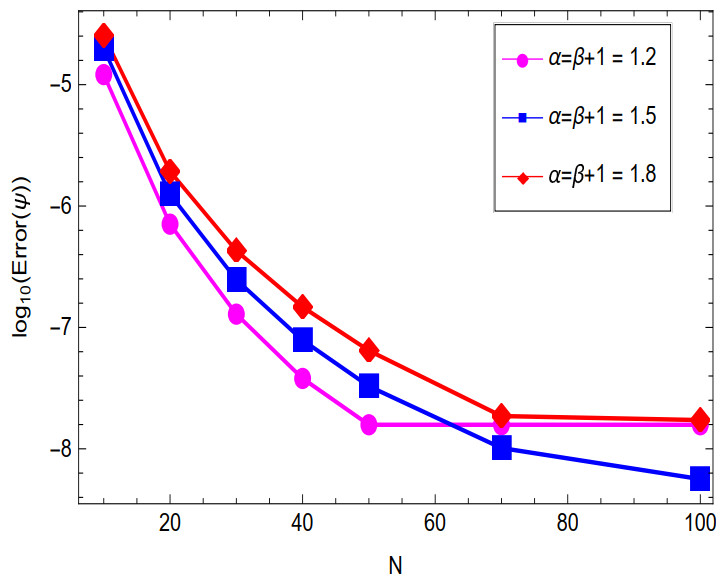
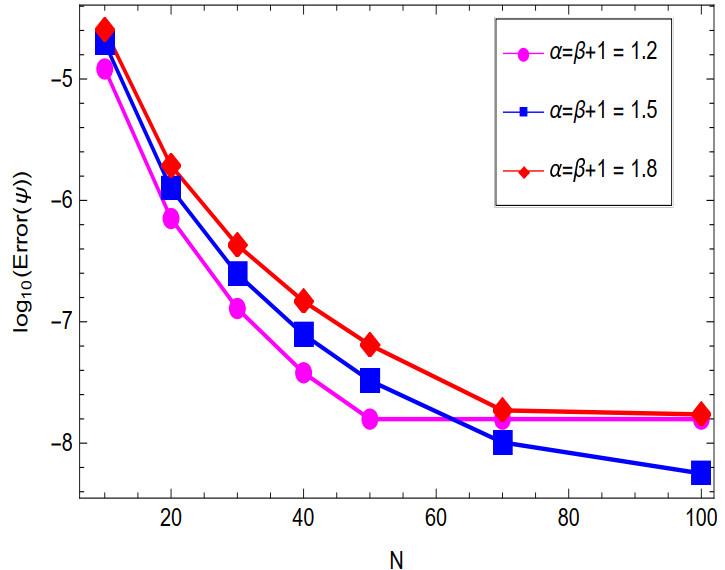
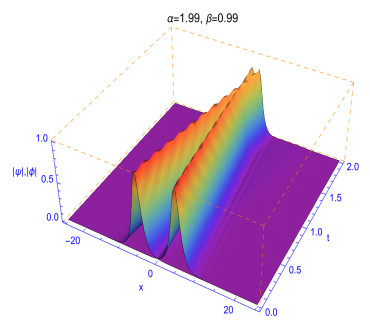
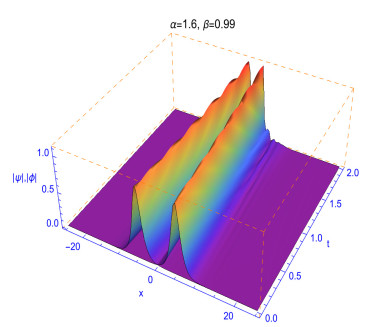

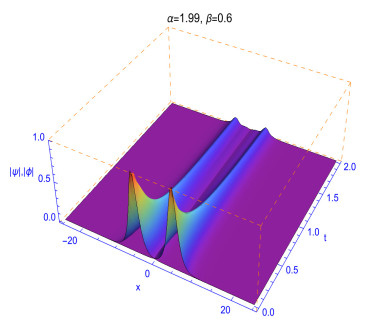
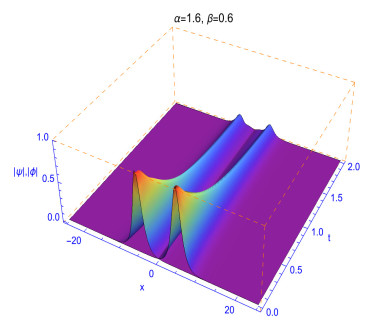



 DownLoad:
DownLoad: